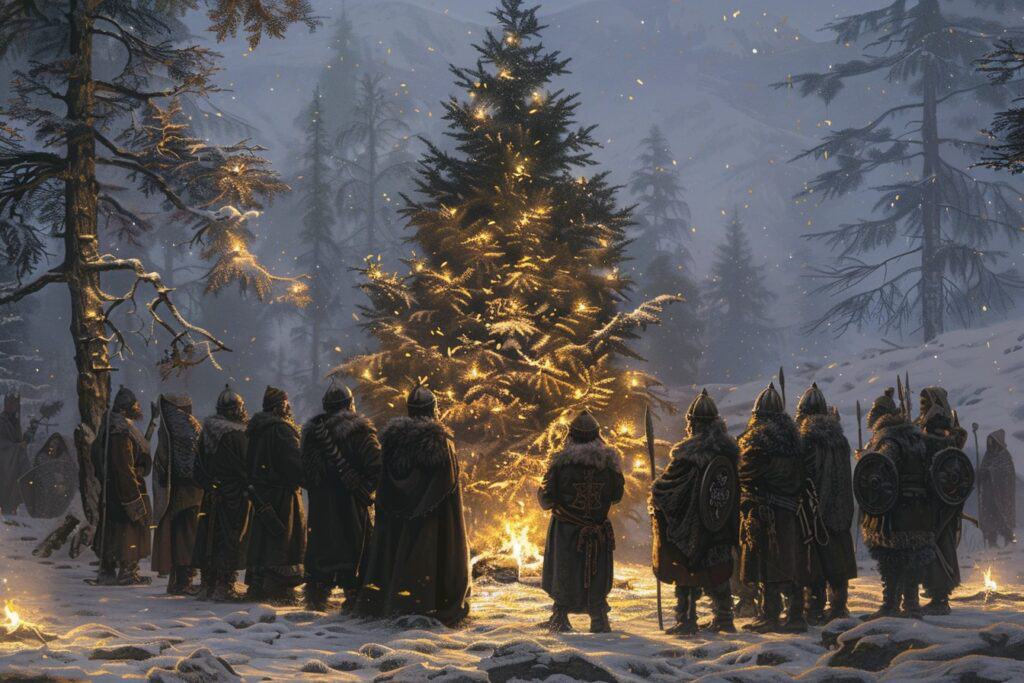Table of Contents
Yule Tree (Winter Solstice)

Date: Around December 21st
Origin and Age: The Yule tree tradition dates back to pre-Christian Germanic tribes, particularly the Norse, who celebrated Yule as a winter solstice festival. The practice of bringing evergreen branches into the home symbolized life enduring through winter. This tradition is believed to be over 2,000 years old. The modern Christmas tree, which evolved from these ancient customs, became popular in Germany in the 16th century and spread throughout Europe and America in the 19th century.
Maypole (Beltane)

Date: May 1st
Origin and Age: The Maypole tradition is rooted in ancient Germanic and Celtic cultures. Beltane, marking the beginning of summer, was a time of celebration and fertility rites. The exact origins are hard to pinpoint, but the tradition of Maypole dancing is thought to be over 1,500 years old. It became especially prominent during medieval times across Europe.
The Oak Tree (Summer Solstice)

Date: Around June 21st
Origin and Age: The reverence for oak trees is central to Celtic druidic practices, which date back to at least 2,500 years ago during the Iron Age. The summer solstice, or Litha, was a significant time for druids who conducted ceremonies under sacred oaks to honor the peak of the sun’s power and the life it brings.
The Yew Tree (Samhain)

Date: October 31st – November 1st
Origin and Age: The yew tree has been associated with death and rebirth in Celtic culture for thousands of years, with some of the oldest yew trees in Britain being over 5,000 years old. Samhain itself is an ancient Celtic festival, with its origins estimated to be over 2,000 years old, marking the end of the harvest and the beginning of the darker half of the year.
The Apple Tree (Autumn Equinox)

Date: Around September 21st
Origin and Age: The apple tree holds a significant place in Celtic mythology, particularly in the story of Avalon. The tradition of honoring the apple during the autumn equinox (Mabon) can be traced back over 2,000 years. Apples were seen as magical fruits, representing knowledge, immortality, and connection to the Otherworld.
The Ash Tree (Yggdrasil)
Relation: The ash tree, particularly Yggdrasil, is a central symbol in Norse mythology. Yggdrasil, the World Tree, is mentioned in the Poetic Edda and Prose Edda, written in the 13th century but based on earlier oral traditions. The concept of Yggdrasil as the cosmic tree likely dates back over 1,000 years, reflecting the Norse understanding of the universe’s structure and balance, which parallels the equinoxes’ themes of balance between light and dark.
Trees in the Old Testament
For all the cedars of Lebanon, tall and lofty, and all the oaks of Bashan
Isaiah 2:13
